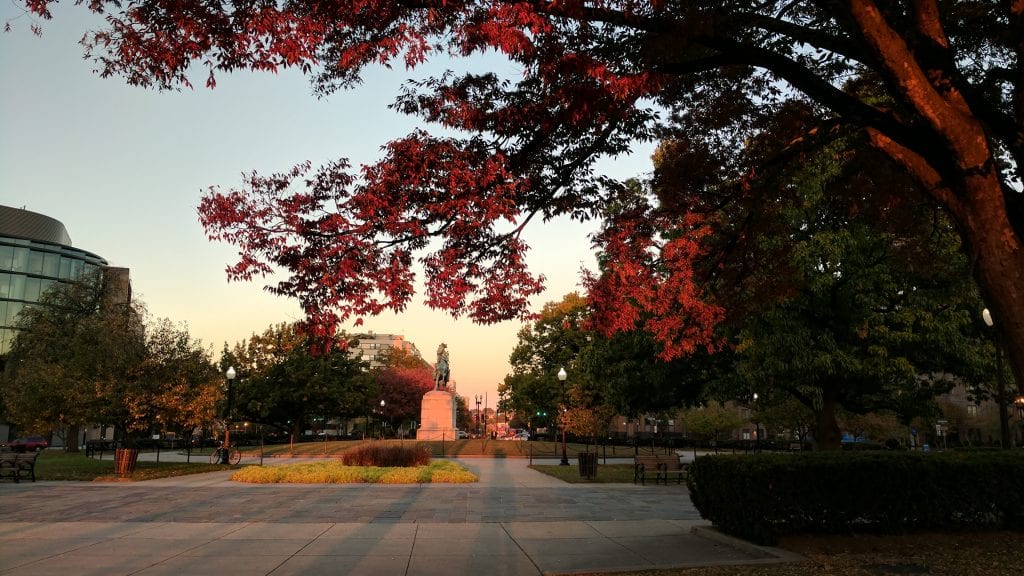
Fall allergy can aggravate sinus symptoms in patients with deviated septum who are considering rhinoplasty. Washington Circle in early morning.
Fall is here and many Washingtonians suffer from sinus problems with the change in the weather and season. Other than allergy medications, chronic sinusitis patients often chose from nasal procedures such as septoplasty, turbinoplasty, rhinoplasty, nasal valve repair, and functional endoscopic sinus surgery (FESS) to improve their sinus symptoms.
We previously discussed how septoplasty with rhinoplasty can improve nasal allergy symptoms, and now we’ll review balloon sinus surgery, which may also be referred as balloon sinuplasty or FinESS procedure. Balloon sinus surgery is a newer procedure that may improve nasal symptoms.
What are the nasal sinuses?
The nasal sinuses are air spaces inside the bones of the facial skeleton. Along with the rest of the nose, the sinuses help warm, humidify, and clean the air we breath. For many patients, sinusitis is a short-term problem that goes away after several days. For some, however, sinusitis becomes a chronic problem that negatively impacts their quality of life and ability to work.
Chronic sinusitis can develop from many factors, such as allergies, infections, polyps, deviated septum, etc. The sinus opening becomes blocked, which inhibits natural ventilation and proper sinus drainage. Management of chronic sinusitis often requires multiple treatments with medication and surgery. A new option now available for appropriate patients is balloon sinus surgery.
What Is Balloon Sinus Surgery?
Sinus surgery with a balloon to relive nasal blockage is similar conceptually to balloon angioplasty for the heart. A small, flexible balloon is inserted into the natural opening of the sinuses, which is then enlarged as the balloon expands. The balloon is then removed from the nose after the sinus passages are opened.
Balloon sinus surgery does not require removal of tissue from your nose or sinuses, unlike endoscopic sinus surgery. Patients may choose this balloon sinus surgery after traditional treatments and medications have failed to work. Balloon sinus surgery can be performed in the office via local anesthesia with minimal recovery time.
Below is an endoscopic video of inside the left nose. The main nasal sinus opening is between the inferior turbinate and middle turbinate, where the balloon is inserted to dilate open the natural opening. This video also demonstrates a deviated septum blocking the sinus passageway.
Can Balloon Sinus Surgery be performed at the same time as septoplasty and rhinoplasty?
Yes, sinus surgery of any type can generally be combined with septoplasty and rhinoplasty. An advantage of combination surgery is only having one anesthesia and recovery period. The decision for the type of nasal surgery is dependent on many factors, including patient anatomy, medical conditions, and patient preference.
Who is not a candidate for Balloon Sinus Surgery?
Sinus surgery with a balloon, however, is not necessarily the best treatment for everyone and results will vary. Patients with symptoms of chronic sinusitis from a deviated septum, narrow nostrils, or extensive nasal polyps are often not balloon sinus surgery candidates. A sinus CT along with an office examination is required to determine ideal candidates for balloon sinus surgery. We previously discussed how a deviated septum is very common for those who suffer from chronic allergies.
Have you considered sinus surgery? Share your thoughts below.

The blog is really worth reading. It contains nice information on Balloon Sinuplasty. Thank you!